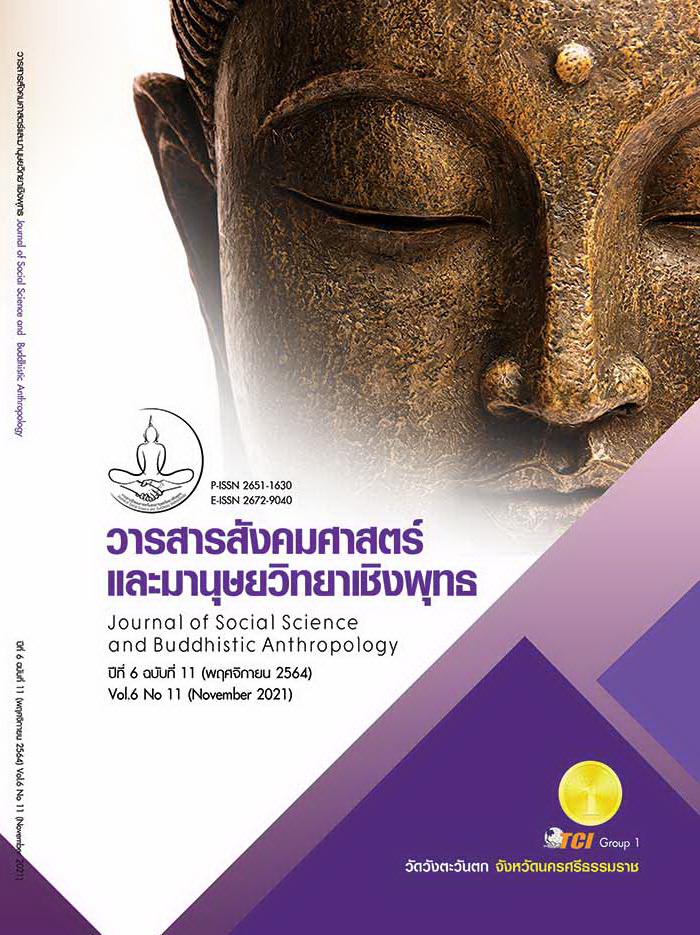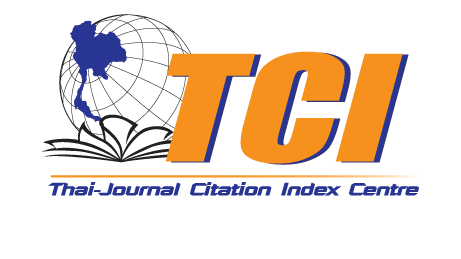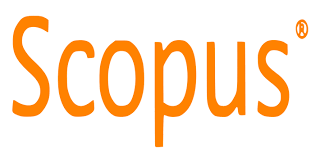ปัจจัยเชิงสาเหตุที่ส่งผลต่อคุณค่าตราเครื่องหมายมาตรฐานสินค้าและผลการดำเนินงานของธุรกิจอุตสาหกรรมสินค้าอุปโภคบริโภคที่อยู่ในรูปสินค้าหีบห่อ
คำสำคัญ:
ส่วนประสมทางการตลาดบริการ, การสื่อสารการตลาดแบบบูรณาการ, การจัดการลูกค้าสัมพันธ์, คุณค่าตราเครื่องหมายมาตรฐาน, ผลการดำเนินงานขององค์กรในอุตสาหกรรมสินค้าอุปโภคบริโภคที่อยู่ในรูปสินค้าหีบห่อบทคัดย่อ
บทความวิจัยนี้มีวัตถุประสงค์เพื่อ 1) ศึกษาปัจจัยส่วนประสมทางการตลาดบริการ การสื่อสารการตลาดแบบบูรณาการ การจัดการลูกค้าสัมพันธ์ ที่ส่งผลต่อคุณค่าตราเครื่องหมายมาตรฐานและผลการดำเนินงานของธุรกิจอุตสาหกรรมสินค้าอุปโภคบริโภคที่อยู่ในรูปสินค้าหีบห่อ ประเทศไทย 2) ศึกษาอิทธิพลของปัจจัยส่วนประสมทางการตลาดบริการ การสื่อสารการตลาดแบบบูรณาการ การจัดการลูกค้าสัมพันธ์ ที่ส่งผลต่อคุณค่าตราเครื่องหมายมาตรฐานสินค้าและผลการดำเนินงานของธุรกิจอุตสาหกรรมสินค้าอุปโภคบริโภคที่อยู่ในรูปสินค้าหีบห่อ ประเทศไทย และ 3) สร้างแบบจำลองเชิงสาเหตุของคุณค่าตราเครื่องหมายมาตรฐานสินค้าในประเทศไทย การวิจัยครั้งใช้ระเบียบวิธีวิจัยแบบผสมผสาน โดยมีกลุ่มตัวอย่างเป็นผู้ประกอบการในอุตสาหกรรมสินค้าอุปโภคบริโภคที่อยู่ในรูปสินค้าหีบห่อ ประเทศไทย จำนวน 440 ราย ซึ่งมีแบบสอบถาม (Questionnaire) แบบมาตรส่วน 5 ระดับ มีค่าความเชื่อมั่นเท่ากับ 0.98 และข้อคำถามในการสัมภาษณ์เชิงลึก (In - depth interview) เป็นเครื่องมือที่ใช้ในการวิจัย ร่วมกับการวิเคราะห์ข้อมูลด้วยตัวแบบสมการโครงสร้าง (Structural Equation Model: SEM) โดยโปรแกรม LISREL ผลการวิจัย พบว่า ปัจจัยเชิงสาเหตุ ด้านส่วนประสมทางการตลาดบริการ ด้านการสื่อสารการตลาดแบบบูรณาการ ด้านการจัดการลูกค้าสัมพันธ์ มีอิทธิพลเชิงบวกต่อคุณค่าตราเครื่องหมายมาตรฐานและผลการดำเนินงานขององค์กรในธุรกิจอุตสาหกรรมสินค้าอุปโภคบริโภคที่อยู่ในรูปสินค้าหีบห่อในประเทศไทย และค่าความกลมกลืนของแบบจำลอง ได้แก่ ค่าดัชนี /df = 1.238, CFI = 1.00, GFI = 0.98, AGFI = 0.94, RMSEA = 0.023 และ SRMR = 0.029 ดังนั้น จึงเป็นการยืนยันความเหมาะสมกลมกลืนกับข้อมูลเชิงประจักษ์ของแบบจำลองเชิงสาเหตุของคุณค่าตราเครื่องหมายมาตรฐานสินค้าในประเทศไทย
References
กรมการค้าภายใน กองชั่งตวงวัด. (2563). สถิติผู้ประกอบการในอุตสาหกรรมสินค้าอุปโภคบริโภคที่อยู่ในรูปสินค้า หีบห่อ. เรียกใช้เมื่อ 30 ธันวาคม 2563 จาก http://cbwm.dit.go.th/Package/MerchantPackaging.aspx
วิชิต อู่อ้น. (2553). การวิจัยและการสืบค้นข้อมูลทางธุรกิจ. กรุงเทพมหานคร: มหาวิทยาลัยศรีปทุม.
สำนักงานเลขานุการของคณะกรรมการยุทธศาสตร์ชาติ. (2561). ยุทธศาสตร์ชาติ พ.ศ. 2561 - 2580. (พิมพ์ครั้งที่ 1). สำนักงานเลขานุการของคณะกรรมการยุทธศาสตร์ชาติ: กรุงเทพมหานคร.
Al-Azzam, A. F. M. (2016). The Impact of Customer Relationship Management on Hotels Performance in Jordan. International Journal of Business and Social Science, 7(4), 200-210.
Anabila, P. (2020). Integrated marketing communications, brand equity, and business performance in micro - finance institutions: An emerging market perspective. Journal of Marketing Communications, 26(3), 229-242.
Bertalanffy, L. V. (1968). General system theory: Foundations, Development, Applications. New York: George Braziller.
Brierley, S. (2002). The Advertising Handbook. London: Routledge.
Chepkwony, D. et al. (2018). Influence of Brand Equity on Financial Performance of Mobile Telecommunication Firms in Nairobi, Kenya. International Journal of Economics, Commerce and Management, VI (9), 487-531.
Clifton, R. et al. (2003). BRANDS AND BRANDING. London: Profile Books Ltd.
ElKordy, M. (2014). The Impact of CRM Capability Dimensions on Organizational Performance. European Journal of Business and Social Sciences, 2(10), 128-146.
Gonzalo, M.-G. et al. (2018). Brand Equity and Business Performance in Family and Non - Family Mexican Small Business. International Journal of Business and Management, 13(10), 182-191.
Hilal, M. I. M. (2019). The Effects of Services Marketing Mix Elements on Brand Equity and Customer Response of Tourists Hotels in the East Coast of Sri Lanka. International Journal of Innovative Technology and Exploring Engineering (IJITEE), 8(11S2), 249-259.
Jemutai, C. R. & Wambua, P. P. (2016). Integrated Marketing Communication and Performance of Kenya Post and Savings Bank. Social Sciences, 5(3), 37-49.
Lingavel, D. (2015). Impact of Customer Relationship Management on Brand Equity: Private Hospitals in Jaffna. European Journal of Business and Management, 7(4), 69-79.
Mac-Kingsley, I. & Pokubo, I. M. (2019). Marketing Mix Strategies Performance: A Study of in SMEs in Rivers State of Nigeria. World Journal of Entrepreneurial Development Studies, 3(1), 32-39.
Majumdar, R. (2004). Product Management in India. New Delhi: Prentice Hall India Pvt.
Mohan, B. C. & Sequeira, A. H. (2016). The impact of customer - based brand equity on the operational performance of FMCG companies in India. IIMB Management Review, 28(1), 13-19.
Mongkol, K. (2014). Integrated Marketing Communication to Increase Brand Equity: The Case of a Thai Beverage Company. International Journal of Trade, Economics and Finance, 5(5), 445-448.
Obinwanne, C. O. & Ukabuilu, E. N. (2019). Utilization of Integrated Marketing Communication Tools for Brand Recognition and Sales in Hotels. Journal of Hotel Management and Tourism Research, 4(1), 29-38.
Rahmah, K. et al. (2018). The effect of brand equity, marketing mix, and lifestyle toward purchase decision at coffee shop in BOGOR. Journal of Consumer Sciences, 03(02), 01-15.
Shriedeh, F. & Abdghani, N. H. (2016). Impact of Innovation on the Relationship between Customer Relationship Management and Brand Equity in the Medical Tourism of Jordan. Journal of Research in Business, Economics and Management, 7(4), 1150-1158.
Slaughter, S. & Rhoades, G. (2004). Academic capitalism and the new economy: Markets, state, and higher education. Baltimore: Johns Hopkins University Press.
Yoo, B. et al. (2000). An Examination of Selected Marketing Mix Elements and Brand Equity. Journal of the Academy of Marketing Science, 28(2), 195-211.






